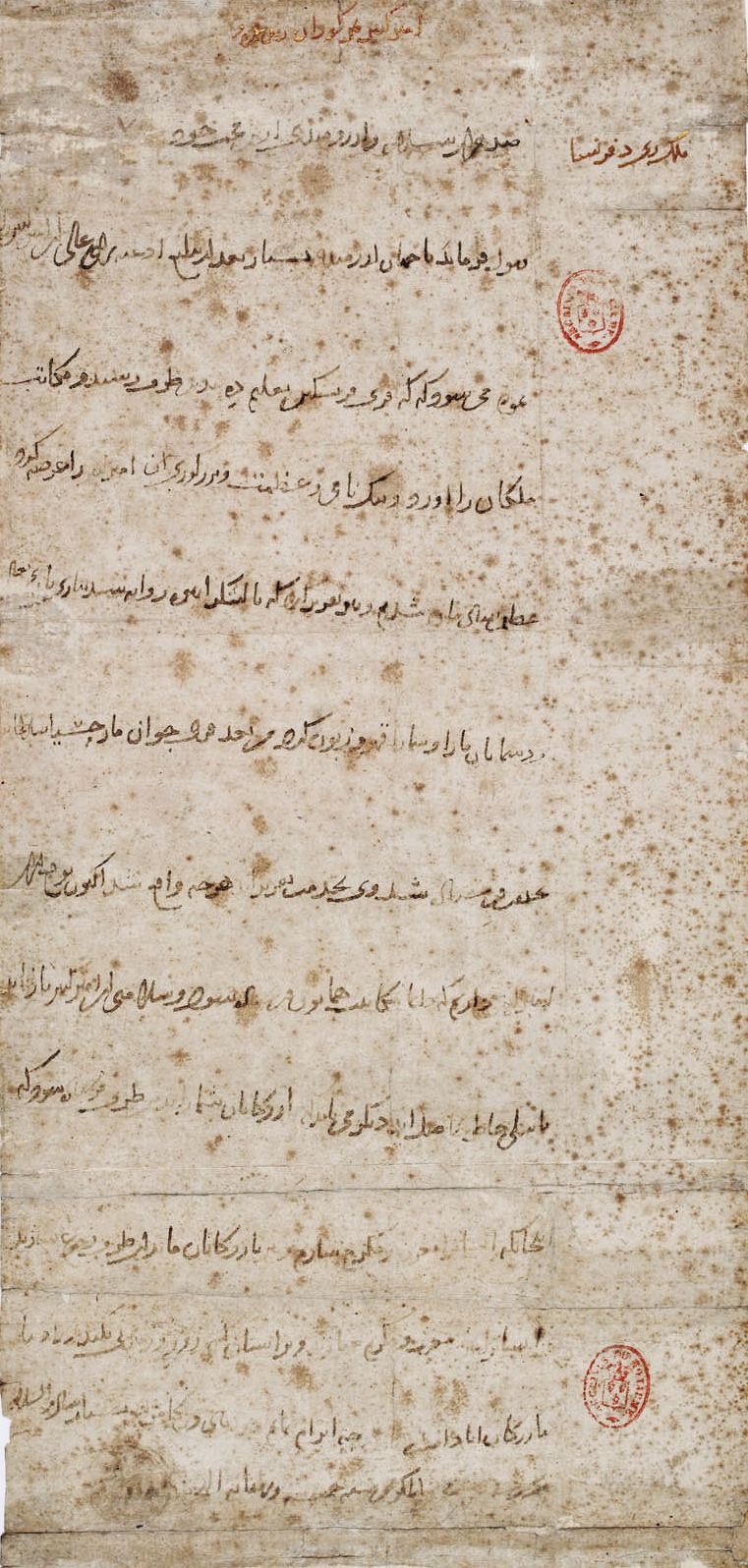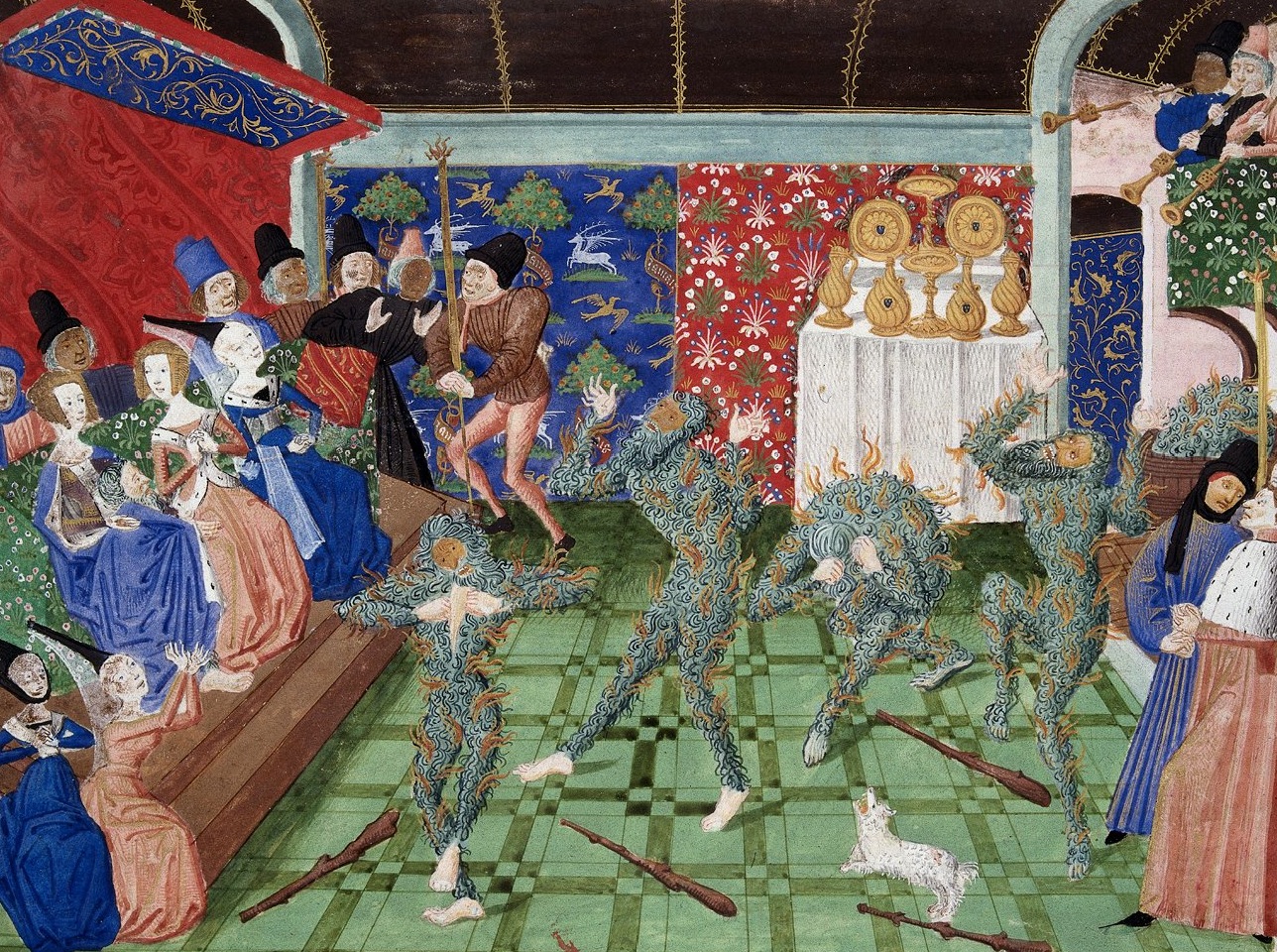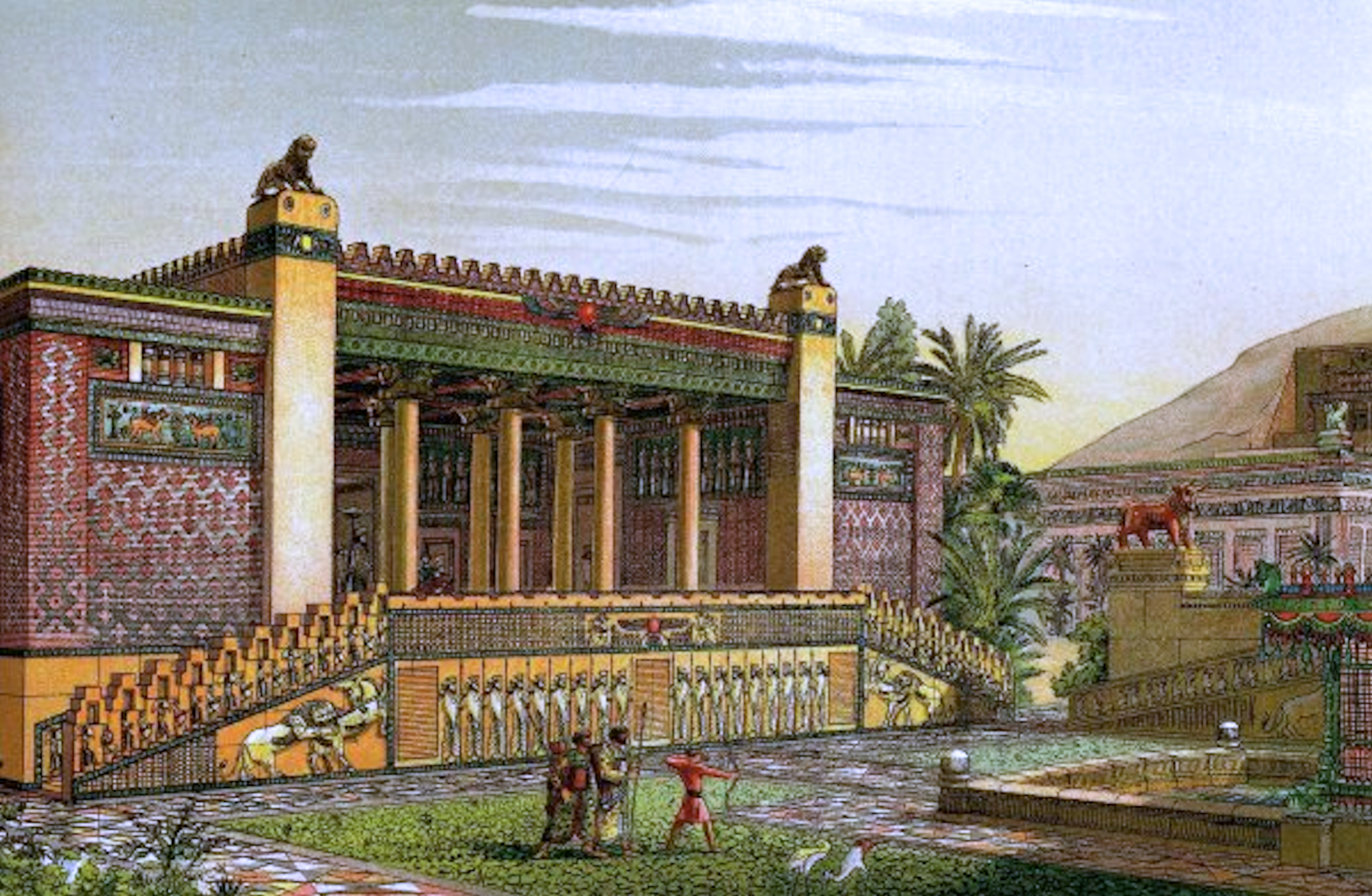|
Ruy González De Clavijo
Ruy González de Clavijo (died 2 April 1412) was a Castilian traveler and writer. In 1403–05 Clavijo was the ambassador of Henry III of Castile to the court of Timur, founder and ruler of the Timurid Empire. A diary of the journey, perhaps based on detailed notes kept while traveling, was later published in Spanish in 1582 (') and in English in 1859 (''Narrative of the Embassy of Ruy Gonzalez de Clavijo to the Court of Timour at Samarcand AD 1403–6''). The embassy to Samarkand Clavijo, a nobleman of Madrid and chamberlain to the king, set sail from Cadiz on 21 May 1403 in the company of Timur's ambassador, Muhammed al-Kazi, a Dominican friar, Alfonso Páez de Santa María, one of the king's guards, Gómez de Salazar, and other unnamed Castilians. Clavijo sailed through the Mediterranean, passing Majorca, Sicily and Rhodes to Constantinople. To use the modern names for the countries through which Clavijo passed, he sailed along the Black Sea coast of Anatolia to Trebizond ... [...More Info...] [...Related Items...] OR: [Wikipedia] [Google] [Baidu] |
Tehran
Tehran (; , ''Tehrân'') is the capital and largest city of Iran. It is the capital of Tehran province, and the administrative center for Tehran County and its Central District (Tehran County), Central District. With a population of around 9.8 million in the city as of 2025, and 16.8 million in the metropolitan area, Tehran is the List of largest cities of Iran, most populous city in Iran and Western Asia, the Largest metropolitan areas of the Middle East, second-largest metropolitan area in the Middle East after Cairo, and the 24th most populous metropolitan area in the world. Greater Tehran includes several municipalities, including, Karaj, Eslamshahr, Shahriar, Tehran province, Shahriar, Qods, Iran, Qods, Malard, Golestan, Tehran, Golestan, Pakdasht, Qarchak, Nasimshahr, Parand, Pardis, Andisheh and Fardis. In the classical antiquity, part of the territory of present-day Tehran was occupied by Rhages (now Ray, Iran, Ray), a prominent Medes, Median city almost entirely des ... [...More Info...] [...Related Items...] OR: [Wikipedia] [Google] [Baidu] |
Travel Literature
The genre of travel literature or travelogue encompasses outdoor literature, guide books, nature writing, and travel memoirs. History Early examples of travel literature include the '' Periplus of the Erythraean Sea'' (generally considered a 1st century CE work; authorship is debated), Pausanias' ''Description of Greece'' in the 2nd century CE, '' Safarnama'' (Book of Travels) by Nasir Khusraw (1003-1077), the '' Journey Through Wales'' (1191) and '' Description of Wales'' (1194) by Gerald of Wales, and the travel journals of Ibn Jubayr (1145–1214), Marco Polo (1254–1354), and Ibn Battuta (1304–1377), all of whom recorded their travels across the known world in detail. As early as the 2nd century CE, Lucian of Samosata discussed history and travel writers who added embellished, fantastic stories to their works. The travel genre was a fairly common genre in medieval Arabic literature. In China, 'travel record literature' () became popular during the Song ... [...More Info...] [...Related Items...] OR: [Wikipedia] [Google] [Baidu] |
Chen Cheng (Ming Dynasty)
Chen Cheng () (1365–1457), courtesy name Zilu (子鲁), pseudonym Zhushan (竹山), was a Chinese diplomat known for his overland journeys into Central Asia during the Ming dynasty. His travels were contemporaneous to the treasure voyages of the admiral Zheng He. Life Chen was born in 1365 in Linchuan County, Jiangxi province. He obtained the positions of ''juren'' (举人) and ''jinshi'' (進士) in 1393 and 1394 respectively after taking the imperial examination. In 1396, Chen was sent on a diplomatic mission to the western region of Qaidam to establish border defence. In 1397, he was sent by the Hongwu Emperor as an envoy to Vietnam. From 1406 to 1411, he served in the Wenyuange (文渊阁), the imperial library in the Forbidden City, as an editor of the ''Yongle Encyclopedia''. Buddhist idols and temples in Turfan were described in 1414 by Chen Cheng. In 1414, 1416 and 1420, Chen Cheng led a Ming mission to the court of the Timurid dynasty at Samarkand Samarkand ( ; ... [...More Info...] [...Related Items...] OR: [Wikipedia] [Google] [Baidu] |
Timurid Relations With Europe
Timurid relations with Europe developed in the early 15th century, as the Persianate Turco-Mongol ruler Timur and European monarchs attempted to operate a rapprochement against the expansionist Ottoman Empire. A strong hostility remained between the Timurds and the Ottoman Turks as well as the Egyptian Mamluks. Although his self-proclaimed title was ghazi (or "conqueror"), Timur maintained relatively friendly relations with Europe. Europe at the time was threatened by the conquering armies of the Ottoman Turks and was desperate for allies. Timur likewise saw the European states as allies to help him fight his Ottoman enemies. After his successful campaigns in the Indian subcontinent in 1399, Timur took Aleppo and Damascus in 1400. He fought and eventually vanquished the Ottoman ruler Bayazid I at the Battle of Ankara in July 1402. Relations with Spanish and French kingdoms Prior to the Battle of Ankara, as the Hundred Years' War was going through a quiet phase, many Euro ... [...More Info...] [...Related Items...] OR: [Wikipedia] [Google] [Baidu] |
Chronology Of European Exploration Of Asia
This is a chronology of the early European exploration of Asia. First wave of exploration (mainly by land) Antiquity * 515 BC: Scylax explores the Indus and the sea route across the Indian Ocean to Egypt. * 330 BC: Alexander the Great conquers parts of Central Asia and parts of northwestern India. * 300 BC: Seleucus Nicator, founder of the Seleucid Empire, forays into northwestern India but is defeated by Chandragupta Maurya, founder of the Maurya Empire, and they become allies soon after. * 250 – 120 BC: Greco-Bactrian states in parts of Central Asia and South Asia, including the Fergana Valley ( Alexandria Eschate), Transoxiana ( Alexandria on the Oxus) and Punjab ( Alexandria on the Indus). * 180 BC – 10 AD: The Indo-Greek Kingdom was located in areas now part of Afghanistan, Pakistan and north-west India. * 30 BC – 640 AD: With the acquisition of Ptolemaic Egypt, the Romans begin trading with India. The Empire now has a direct connection to the Spice trade Egypt h ... [...More Info...] [...Related Items...] OR: [Wikipedia] [Google] [Baidu] |
Charles VI Of France
Charles VI (3 December 136821 October 1422), nicknamed the Beloved () and in the 19th century, the Mad ( or ''le Fou''), was King of France from 1380 until his death in 1422. He is known for his mental illness and psychosis, psychotic episodes that plagued him throughout his life. Charles ascended the throne at age 11, his father Charles V of France, Charles V leaving behind a favorable military situation, marked by the reconquest of most of the English possessions in France. Charles VI was placed under the regency of his uncles: Philip II, Duke of Burgundy; Louis I, Duke of Anjou; John, Duke of Berry; and Louis II, Duke of Bourbon. He decided in 1388, aged 20, to emancipate himself. In 1392, while leading a military expedition against the Duchy of Brittany, the king had his first attack of delirium, during which he attacked his own men in the forest of Le Mans. A few months later, following the ''Bal des Ardents'' (January 1393) where he narrowly escaped death from burning, Char ... [...More Info...] [...Related Items...] OR: [Wikipedia] [Google] [Baidu] |
Ottoman Empire
The Ottoman Empire (), also called the Turkish Empire, was an empire, imperial realm that controlled much of Southeast Europe, West Asia, and North Africa from the 14th to early 20th centuries; it also controlled parts of southeastern Central Europe, between the early 16th and early 18th centuries. The empire emerged from a Anatolian beyliks, ''beylik'', or principality, founded in northwestern Anatolia in by the Turkoman (ethnonym), Turkoman tribal leader Osman I. His successors Ottoman wars in Europe, conquered much of Anatolia and expanded into the Balkans by the mid-14th century, transforming their petty kingdom into a transcontinental empire. The Ottomans ended the Byzantine Empire with the Fall of Constantinople, conquest of Constantinople in 1453 by Mehmed II. With its capital at History of Istanbul#Ottoman Empire, Constantinople (modern-day Istanbul) and control over a significant portion of the Mediterranean Basin, the Ottoman Empire was at the centre of interacti ... [...More Info...] [...Related Items...] OR: [Wikipedia] [Google] [Baidu] |
Bayezid I
Bayezid I (; ), also known as Bayezid the Thunderbolt (; ; – 8 March 1403), was the sultan of the Ottoman Empire from 1389 to 1402. He adopted the title of ''Sultan-i Rûm'', ''Rûm'' being the Arabic name for the Eastern Roman Empire. In 1394, Bayezid unsuccessfully Siege of Constantinople (1394–1402), besieged Constantinople. Bayezid vanquished all the Beyliks and proceeded to conquer and vassalize the entirety of Anatolia. In 1402, he once more besieged Constantinople, appearing to find success, but he ultimately withdrew due to the invasion of the Turco-Mongol conqueror Timur.Mango, Cyril. ''The Oxford History of Byzantium''. New York: Oxford UP, 2002. pp. 273–274 He defeated the Crusaders at the Battle of Nicopolis in what is now Bulgaria in 1396. He was later defeated and captured by Timur at the Battle of Ankara in 1402 and died in captivity in March 1403, which triggered the Ottoman Interregnum. Biography Bayezid was the son of Murad IRunciman, Steven ''The Fall ... [...More Info...] [...Related Items...] OR: [Wikipedia] [Google] [Baidu] |
Battle Of Ankara
The Battle of Ankara or Angora () was fought on 28 July 1402, at the Çubuk plain near Ankara, between the forces of the Ottoman sultan Bayezid I and the emir of the Timurid Empire, Timur. The battle was a major victory for Timur, and it led to the Ottoman Interregnum. Background Timur, a Turco-Mongol from Transoxiana (now Uzbekistan), had built an empire in Central Asia over the years, and became the most powerful ruler in Central Asia since Genghis Khan. He sought to rebuild the once great Mongol Empire. In the 1380s and 1390s, he invaded and conquered parts of Persia (including Azerbaijan and Upper Mesopotamia), ravaged southern Russia and Ukraine (1395–96), and sacked Delhi (1398). Although there had been tensions between the Ottomans and Mongols, nothing would warrant a war, until Bayezid demanded tribute from an emir loyal to Timur, which he understood to be a personal affront and a reason for war. In 1400–01 Timur took Sivas from the Ottomans, parts of Syria from the ... [...More Info...] [...Related Items...] OR: [Wikipedia] [Google] [Baidu] |
Paradise Garden
The paradise garden is a form of garden of Old Iranian origin, specifically Achaemenid which is formal, symmetrical and most often, enclosed. The most traditional form is a rectangular garden split into four quarters with a pond in the center, a four-fold design called ''chahar bagh'' (“four gardens”). One of the most important elements of paradise gardens is water, with ponds, canals, rills, and fountains all being common features. Scent is an essential element with fruit-bearing trees and flowers selected for their fragrance. It is also often referred to as an Islamic garden. The form of garden spread throughout Egypt and the Mediterranean during the Muslim Arabic conquests, reaching as far as India and Spain. Etymology Originally denominated by a single noun denoting "a walled-in compound or garden", from "''pairi''" ("around") and "''daeza''" or "''diz''" ("wall", "brick", or "shape"), philosopher and historian Xenophon of Athens borrowed the Old Iranian ''*paridaiz ... [...More Info...] [...Related Items...] OR: [Wikipedia] [Google] [Baidu] |
Mosque
A mosque ( ), also called a masjid ( ), is a place of worship for Muslims. The term usually refers to a covered building, but can be any place where Salah, Islamic prayers are performed; such as an outdoor courtyard. Originally, mosques were simple places of prayer for the early Muslims, and may have been open spaces rather than elaborate buildings. In the first stage of Islamic architecture (650–750 CE), early mosques comprised open and closed covered spaces enclosed by walls, often with minarets, from which the Adhan, Islamic call to prayer was issued on a daily basis. It is typical of mosque buildings to have a special ornamental niche (a ''mihrab'') set into the wall in the direction of the city of Mecca (the ''qibla''), which Muslims must face during prayer, as well as a facility for ritual cleansing (''wudu''). The pulpit (''minbar''), from which public sermons (''khutbah'') are delivered on the event of Friday prayer, was, in earlier times, characteristic of the central ... [...More Info...] [...Related Items...] OR: [Wikipedia] [Google] [Baidu] |








